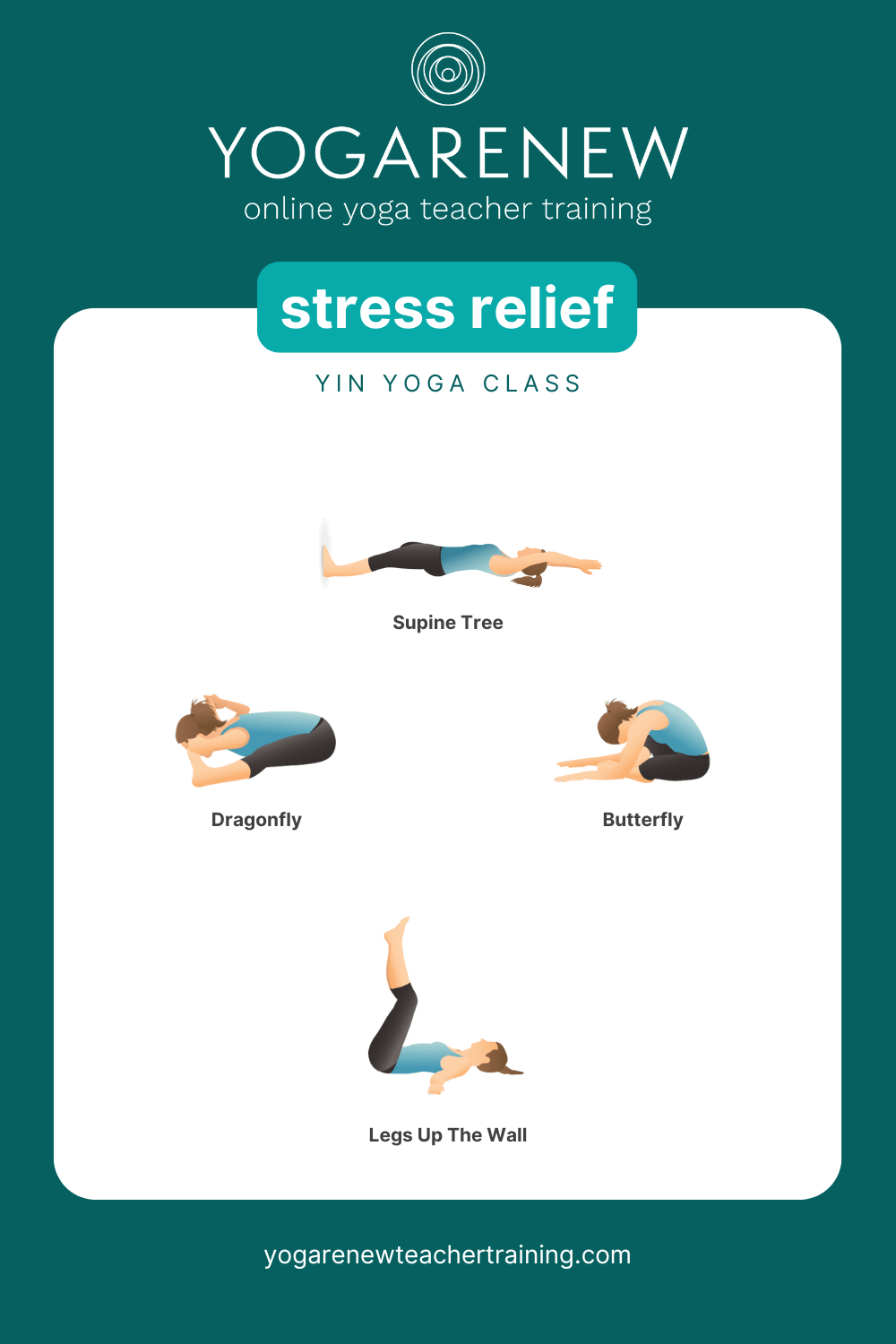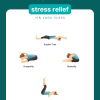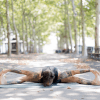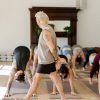
Stress is a common issue that we all deal with on a daily basis. Prolonged stress can lead to diseases, lowered immunity, tiredness, fatigue, and burnout. Stress also leads to depression, anxiety, and social or communication issues. How we react to stress determines how stressed we actually feel as well as our outlook on life. For example, two people could be in the same stressful situation, but if one has learned to reframe that situation in a positive light—or learned how to react less to it—that person will have a completely different experience.
A regular yoga and meditation practice can help us to combat stress and help us with how we respond to stressful situations. By quieting the mind and allowing ourselves to be more deeply aware of the present moment, we can start to become more mindful of our emotions, our thoughts, and how we react to stressful situations. A calming yoga practice can help us to soothe our central nervous system and promote inner peace.
To sequence a class for this theme, consider asanas (postures) that promote relaxation in the body and mind.
Yin yoga poses to promote stress relief
Supine Tree
Supine, or reclined, tree pose is a great way to start off any yin yoga class centered around de-stressing. Having students start on their back can allow them to feel relaxed. It also allows for them to explore a pose without being tempted to peer over at other students. You can even encourage them to close their eyes or find a soft, gentle gaze and tune inward. Supine tree is just like the standing version of tree and allows for multiple modifications.
How to: Lie down on your back and bend one knee to draw the foot of that knee as close to your seat as you can, with the sole of that foot resting up against the inner thigh of the opposite leg. Let the bent knee fall open to the side (letting the knee fall down towards the floor). Extend the leg that isn’t bent long out in front of you. Reach your arms up overhead.
Modifications:
- Place blankets or a bolster underneath the bent knee to offer support and cushioning under that knee.
- Keep the hands on the body, perhaps anchoring down the hips/pelvis.
- Hold a block in between your hands as they extend upward.
- Place your blocks, sandbags or weighted eye pillows on the palms of the hands to steady them and weigh them down to find grounding and stillness.
Dragonfly Pose
Dragonfly pose is a forward fold, which makes it ideal for calming the mind. Seated forward folds are designed to bring the body back to a place of stillness and grounding.
How to: Sit down on the floor, sitting upright. Widen your legs as much as you can without straining any part of the leg, ankle, or foot. Slowly start to fold forward (your upper back will naturally start to round – this is okay)! Let your forehead come down onto something, whether it’s the ground or blocks. *Option to grab feet or big toes.
Modifications:
- Place rolled up blankets underneath your knees.
- Place blocks underneath your forehead or underneath your hands out in front of you.
- Create a Stonehenge shape with two blocks and a bolster to drape the upper half of your body over as you fold forward.
Butterfly Pose
Butterfly is another forward fold but this time with knees bent and the soles of the feet coming together.
How to: Sit on the floor with your legs straight out in front of you. Use your hands to grab your inner thighs and pull your knees open. Bring the soles of your feet together. Fold forward by grabbing onto your ankles.
Modifications:
- Place a block in between the soles of your feet and your head.
- Place blankets or blocks underneath your knees.
Legs Up The Wall
Legs up the wall can be incorporated into almost any yoga class, but it’s particularly appropriate for a yin yoga class. This posture allows the lymphatic drainage to flow healthily throughout your body as the blood circulates toward the heart with the legs being suspended upward. This pose is also a great addition in aiding in stress relief as it helps the yogi find stillness and feel the effects of an inversion (since the heart is technically above the head a tiny bit).
How to: Sit with your hips up against the wall and then swing your legs up like a dial, letting them rest along the wall. Knees can be bent or fully straightened – whatever is most comfortable for the person practicing.
Modifications:
- Place a blanket underneath your seat.
- Place a blanket or sandbag on the soles of the feet once they are elevated.
- Place sandbags or weighted eye pillows on the palms of the hands.
Try this yin yoga practice at home!
Yin yoga can be practiced in a studio or in the comfort of your own home. Whether you’re a yogi looking to enhance your home practice or a yoga teacher searching for inspiration, we’ve got you covered! Don’t forget to drop your email to stay in the loop with yoga teacher trainings, workshops and new yoga weekly class themes every week.







